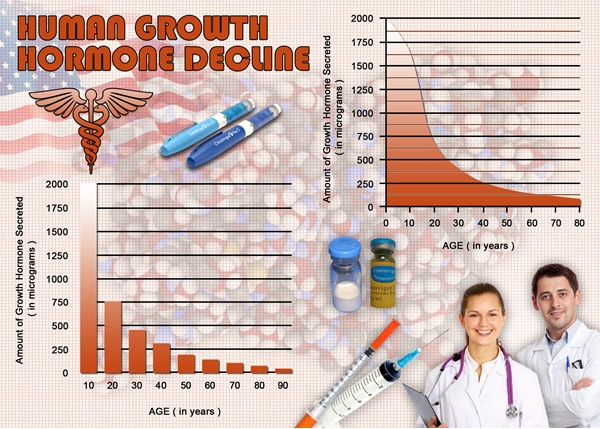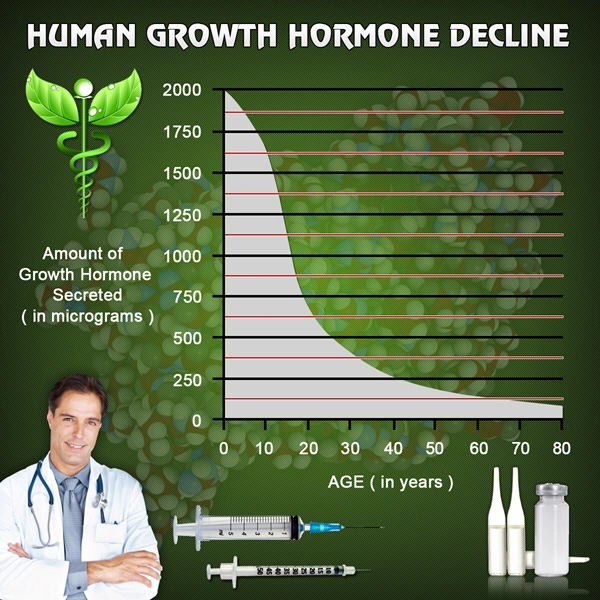Introduction to Knee Health in Football
Knee injuries are among the most common and debilitating issues faced by American male football running backs. The nature of the sport, with its high-impact collisions and rapid directional changes, places significant stress on the knee joint. Understanding the anatomy and function of the knee is crucial for both preventing injuries and managing them effectively when they occur.
Anatomy of the Knee
The knee is a complex joint that consists of bones, cartilage, ligaments, and tendons. The primary bones involved are the femur (thigh bone), tibia (shin bone), and patella (kneecap). The knee's stability is maintained by four main ligaments: the anterior cruciate ligament (ACL), posterior cruciate ligament (PCL), medial collateral ligament (MCL), and lateral collateral ligament (LCL). Additionally, the menisci, which are C-shaped pieces of cartilage, act as cushions between the femur and tibia.
Common Knee Injuries in Running Backs
Running backs are particularly susceptible to several types of knee injuries. The most frequent include ACL tears, MCL sprains, meniscal tears, and patellar tendinitis. An ACL tear, often resulting from sudden stops or changes in direction, can sideline a player for months and may require surgical intervention. MCL sprains, while less severe, can still cause significant pain and instability. Meniscal tears, which can occur from twisting movements, may lead to long-term joint issues if not properly treated. Patellar tendinitis, or "jumper's knee," is caused by overuse and can be a chronic problem for athletes.
Prevention Strategies
Preventing knee injuries is paramount for running backs. A comprehensive approach includes strength training, flexibility exercises, and proper technique. Strengthening the muscles around the knee, particularly the quadriceps, hamstrings, and calves, can provide better support and stability. Flexibility exercises, such as stretching and yoga, can improve the range of motion and reduce the risk of strains. Additionally, learning and practicing proper tackling and running techniques can minimize the risk of injury.
Rehabilitation and Recovery
When a knee injury does occur, timely and effective rehabilitation is essential for a full recovery. The initial phase of rehabilitation typically involves reducing inflammation and pain, often through rest, ice, compression, and elevation (RICE). As the injury heals, physical therapy becomes crucial. A tailored program that includes strengthening exercises, balance training, and gradual return to activity can help restore function and prevent re-injury. In some cases, surgical intervention may be necessary, followed by a more extensive rehabilitation process.
The Role of Sports Medicine Professionals
Sports medicine professionals, including orthopedic surgeons, physical therapists, and athletic trainers, play a vital role in the health and performance of football running backs. These experts can provide personalized assessments, treatment plans, and ongoing support to help athletes manage and overcome knee injuries. Regular check-ups and consultations can ensure that any potential issues are addressed before they become serious problems.
Long-Term Knee Health
Maintaining knee health over the long term is crucial for running backs, especially those who wish to continue playing into their later years or transition into coaching or other roles within the sport. Adopting a lifestyle that includes regular exercise, a balanced diet, and proper weight management can help preserve joint health. Additionally, staying informed about the latest advancements in sports medicine can provide new strategies for injury prevention and treatment.
Conclusion
Knee health is a critical concern for American male football running backs, given the high demands and risks associated with their position. By understanding the anatomy of the knee, recognizing common injuries, and implementing effective prevention and rehabilitation strategies, running backs can enhance their performance and longevity in the sport. With the support of sports medicine professionals, these athletes can navigate the challenges of knee injuries and maintain their health and career.

- Effective Sports Medicine Strategies for Preventing Ankle Injuries in Male Volleyball Players [Last Updated On: February 17th, 2025] [Originally Added On: February 17th, 2025]
- Sports Medicine Advances Aid American Male Rowers with Lower Back Pain [Last Updated On: March 18th, 2025] [Originally Added On: March 18th, 2025]
- Snowboarding Wrist Injuries: Mechanisms, Prevention, and Rehabilitation Strategies [Last Updated On: March 18th, 2025] [Originally Added On: March 18th, 2025]
- Hamstring Injuries in Sprinters: Sports Medicine Approach and Rehabilitation Strategies [Last Updated On: March 19th, 2025] [Originally Added On: March 19th, 2025]
- Sports Medicine's Vital Role in Enhancing American Male Triathletes' Health and Performance [Last Updated On: March 19th, 2025] [Originally Added On: March 19th, 2025]
- Sports Medicine's Role in Preventing Overuse Injuries for American Male Climbers [Last Updated On: March 19th, 2025] [Originally Added On: March 19th, 2025]
- Sports Medicine Strategies for Recovery in American Male Martial Artists [Last Updated On: March 19th, 2025] [Originally Added On: March 19th, 2025]
- Sports Medicine Revolutionizes Training for American Male CrossFit Athletes [Last Updated On: March 20th, 2025] [Originally Added On: March 20th, 2025]
- BMX Riding Risks and the Crucial Role of Sports Medicine for American Males [Last Updated On: March 20th, 2025] [Originally Added On: March 20th, 2025]
- Sports Medicine Enhances Performance and Health in American Male Water Polo Players [Last Updated On: March 20th, 2025] [Originally Added On: March 20th, 2025]
- Sports Medicine Enhances Performance and Safety for American Male Figure Skaters [Last Updated On: March 21st, 2025] [Originally Added On: March 21st, 2025]
- Knee Health Strategies for American Male Ultimate Frisbee Players: Prevention and Recovery [Last Updated On: March 21st, 2025] [Originally Added On: March 21st, 2025]
- Sports Medicine's Impact on Surfing Injuries in American Males: Prevention and Treatment [Last Updated On: March 21st, 2025] [Originally Added On: March 21st, 2025]
- Preventing Back Injuries in American Male Rowers: A Sports Medicine Approach [Last Updated On: March 23rd, 2025] [Originally Added On: March 23rd, 2025]
- Sports Medicine's Role in Enhancing Polo Performance and Health for American Males [Last Updated On: March 23rd, 2025] [Originally Added On: March 23rd, 2025]
- Sports Medicine's Role in Enhancing Performance and Injury Management for American Male Swimmers [Last Updated On: March 24th, 2025] [Originally Added On: March 24th, 2025]
- Sports Medicine Enhances Career Longevity for American Male Badminton Players [Last Updated On: March 24th, 2025] [Originally Added On: March 24th, 2025]
- Ankle Health Strategies for American Male Beach Volleyball Players [Last Updated On: March 24th, 2025] [Originally Added On: March 24th, 2025]
- Managing Rotator Cuff Injuries in American Male Swimmers: A Sports Medicine Approach [Last Updated On: March 24th, 2025] [Originally Added On: March 24th, 2025]
- Muscle Health Strategies for American Male Speed Skaters: A Holistic Approach [Last Updated On: March 24th, 2025] [Originally Added On: March 24th, 2025]
- Sports Medicine: Enhancing Performance and Health in American Male Track and Field Athletes [Last Updated On: March 24th, 2025] [Originally Added On: March 24th, 2025]
- Preventing Shoulder Injuries in Lacrosse Goalies: A Sports Medicine Approach [Last Updated On: March 25th, 2025] [Originally Added On: March 25th, 2025]
- Ankle Health Strategies for American Male Basketball Point Guards [Last Updated On: March 25th, 2025] [Originally Added On: March 25th, 2025]
- Sports Medicine Advances Enhance Injury Management for American Male Field Hockey Players [Last Updated On: March 25th, 2025] [Originally Added On: March 25th, 2025]
- Sports Medicine Enhances Performance and Safety in Trampoline Gymnastics for American Males [Last Updated On: March 25th, 2025] [Originally Added On: March 25th, 2025]
- Sports Medicine Enhances Performance and Longevity in American Male Fencers [Last Updated On: March 25th, 2025] [Originally Added On: March 25th, 2025]
- Sports Medicine's Vital Role in Enhancing Rugby Sevens Performance and Safety [Last Updated On: March 25th, 2025] [Originally Added On: March 25th, 2025]
- Sports Medicine: Essential for American Male Rugby Forwards' Health and Performance [Last Updated On: March 25th, 2025] [Originally Added On: March 25th, 2025]
- Sports Medicine Advances Extend Baseball Pitchers' Careers [Last Updated On: March 25th, 2025] [Originally Added On: March 25th, 2025]
- Advancements in Sports Medicine Aid Hip Recovery in American Male Track Cyclists [Last Updated On: March 26th, 2025] [Originally Added On: March 26th, 2025]
- Sports Medicine: Enhancing Performance and Health in American Male Table Tennis Players [Last Updated On: March 26th, 2025] [Originally Added On: March 26th, 2025]
- Optimizing Recovery for American Male Soccer Goalkeepers: Physical and Mental Strategies [Last Updated On: March 26th, 2025] [Originally Added On: March 26th, 2025]
- Preventing Stress Fractures in Male Runners: Sports Medicine's Multifaceted Approach [Last Updated On: March 26th, 2025] [Originally Added On: March 26th, 2025]
- Sports Medicine's Role in Enhancing American Male Volleyball Players' Performance and Health [Last Updated On: March 26th, 2025] [Originally Added On: March 26th, 2025]
- Sports Medicine Boosts Career Longevity for American Male Baseball Outfielders [Last Updated On: March 26th, 2025] [Originally Added On: March 26th, 2025]
- Optimizing Recovery for Football Wide Receivers: A Sports Medicine Approach [Last Updated On: March 26th, 2025] [Originally Added On: March 26th, 2025]
- Sports Medicine Revolutionizes Training and Recovery in American Male Handball [Last Updated On: March 26th, 2025] [Originally Added On: March 26th, 2025]
- Preventing Hamstring Injuries in American Male Soccer Midfielders: A Comprehensive Guide [Last Updated On: March 26th, 2025] [Originally Added On: March 26th, 2025]
- Lacrosse Midfielders' Hip Injuries: Sports Medicine's Role in Prevention and Treatment [Last Updated On: March 27th, 2025] [Originally Added On: March 27th, 2025]
- Sports Medicine's Vital Role in Recovery for American Male Soccer Defenders [Last Updated On: March 27th, 2025] [Originally Added On: March 27th, 2025]
- Sports Medicine Advances Enhancing Recovery in American Male Ice Hockey Players [Last Updated On: March 27th, 2025] [Originally Added On: March 27th, 2025]
- Tendonitis in American Male Tennis Players: Diagnosis, Treatment, and Prevention Strategies [Last Updated On: March 27th, 2025] [Originally Added On: March 27th, 2025]
- Managing Groin Injuries in American Male Hockey Players: Strategies and Treatments [Last Updated On: March 27th, 2025] [Originally Added On: March 27th, 2025]
- Sports Medicine Revolutionizes Training for American Male Cyclists [Last Updated On: March 28th, 2025] [Originally Added On: March 28th, 2025]
- Sports Medicine's Role in Enhancing Basketball Forwards' Performance and Health [Last Updated On: March 28th, 2025] [Originally Added On: March 28th, 2025]
- Optimizing Recovery for American Male Soccer Forwards: A Sports Medicine Approach [Last Updated On: March 28th, 2025] [Originally Added On: March 28th, 2025]
- Cross-Country Skiing: Knee Health Risks and Prevention Strategies for American Males [Last Updated On: March 28th, 2025] [Originally Added On: March 28th, 2025]
- Lacrosse Shoulder Injuries: Prevention, Treatment, and Sports Medicine Advances [Last Updated On: March 28th, 2025] [Originally Added On: March 28th, 2025]
- Sports Medicine's Role in Preventing Shin Splints in American Male Runners [Last Updated On: March 28th, 2025] [Originally Added On: March 28th, 2025]
- Preventing Achilles Tendon Injuries in Runners: The Role of Sports Medicine [Last Updated On: March 29th, 2025] [Originally Added On: March 29th, 2025]
- Sports Medicine Revolutionizes Performance and Health in American Male Cycling [Last Updated On: March 30th, 2025] [Originally Added On: March 30th, 2025]
- Sports Medicine's Role in Enhancing American Male Swimmers' Performance and Recovery [Last Updated On: March 30th, 2025] [Originally Added On: March 30th, 2025]
- Cross-Country Skiing: Knee Health Strategies for American Male Skiers [Last Updated On: April 3rd, 2025] [Originally Added On: April 3rd, 2025]
- Sports Medicine's Role in Enhancing American Male Volleyball Players' Performance and Health [Last Updated On: April 3rd, 2025] [Originally Added On: April 3rd, 2025]
- Sports Medicine Revolutionizes Performance and Recovery in American Male Track and Field [Last Updated On: April 4th, 2025] [Originally Added On: April 4th, 2025]
- Sports Medicine: Enhancing Health and Performance in American Male Basketball Forwards [Last Updated On: April 6th, 2025] [Originally Added On: April 6th, 2025]
- Managing Groin Injuries in Hockey: Prevention, Treatment, and Rehabilitation Strategies [Last Updated On: April 6th, 2025] [Originally Added On: April 6th, 2025]
- Sports Medicine: Enhancing Rugby Forwards' Performance and Health in the U.S. [Last Updated On: April 6th, 2025] [Originally Added On: April 6th, 2025]
- Lacrosse Midfielders' Hip Injuries: Sports Medicine's Role in Treatment and Prevention [Last Updated On: April 8th, 2025] [Originally Added On: April 8th, 2025]
- Preventing Hamstring Injuries in American Male Soccer Midfielders: A Sports Medicine Approach [Last Updated On: April 8th, 2025] [Originally Added On: April 8th, 2025]
- Sports Medicine's Role in Preventing Achilles Tendon Injuries in American Male Runners [Last Updated On: April 9th, 2025] [Originally Added On: April 9th, 2025]
- Sports Medicine's Vital Role in Enhancing American Male Swimmers' Health and Performance [Last Updated On: April 9th, 2025] [Originally Added On: April 9th, 2025]
- Knee Health Strategies for American Football Running Backs: Prevention, Rehabilitation, Maintenance [Last Updated On: April 10th, 2025] [Originally Added On: April 10th, 2025]
- Sports Medicine: Enhancing Performance and Health in Male Track and Field Athletes [Last Updated On: April 12th, 2025] [Originally Added On: April 12th, 2025]
- Sports Medicine Enhances Career Longevity for Baseball Outfielders [Last Updated On: April 12th, 2025] [Originally Added On: April 12th, 2025]
- Optimizing Recovery for American Male Soccer Forwards: A Holistic Approach [Last Updated On: April 12th, 2025] [Originally Added On: April 12th, 2025]
- Sports Medicine Revolutionizes Training and Recovery for American Male Cyclists [Last Updated On: April 15th, 2025] [Originally Added On: April 15th, 2025]
- Preventing Hamstring Injuries in Soccer: A Comprehensive Guide for American Male Players [Last Updated On: April 15th, 2025] [Originally Added On: April 15th, 2025]
- Cross-Country Skiing: Knee Health Strategies for American Male Skiers [Last Updated On: April 16th, 2025] [Originally Added On: April 16th, 2025]
- Lacrosse Midfielders' Hip Injuries: Diagnosis, Treatment, and Prevention Strategies [Last Updated On: April 17th, 2025] [Originally Added On: April 17th, 2025]
- Managing Groin Injuries in American Male Hockey Players: Sports Medicine Strategies [Last Updated On: April 17th, 2025] [Originally Added On: April 17th, 2025]
- Sports Medicine's Vital Role in Enhancing Rugby Forwards' Performance and Health [Last Updated On: April 18th, 2025] [Originally Added On: April 18th, 2025]
- Sports Medicine's Role in Enhancing American Male Volleyball Players' Performance [Last Updated On: April 18th, 2025] [Originally Added On: April 18th, 2025]
- Preventing Achilles Tendon Injuries in American Male Runners Through Sports Medicine [Last Updated On: April 19th, 2025] [Originally Added On: April 19th, 2025]
- Knee Health Strategies for Football Running Backs: Prevention, Treatment, and Recovery [Last Updated On: April 19th, 2025] [Originally Added On: April 19th, 2025]
- Optimizing Recovery for American Male Soccer Forwards: A Holistic Sports Medicine Approach [Last Updated On: April 19th, 2025] [Originally Added On: April 19th, 2025]
- Sports Medicine: Enhancing Performance and Health for Basketball Forwards [Last Updated On: April 20th, 2025] [Originally Added On: April 20th, 2025]



List of USA state clinics - click a flag below for blood testing clinics.
Word Count: 609



















































